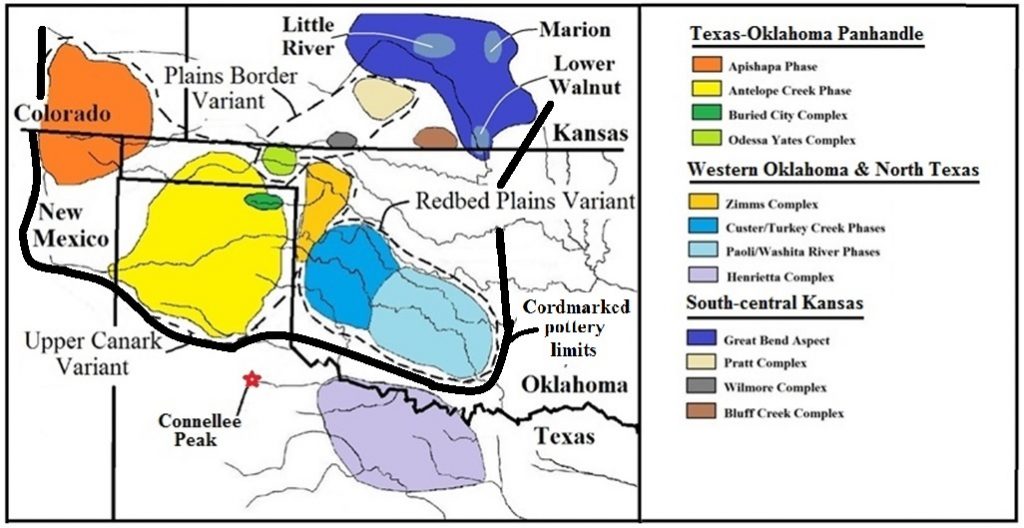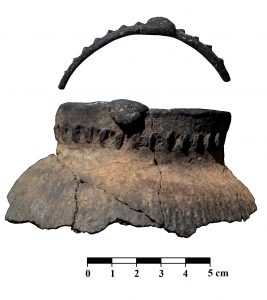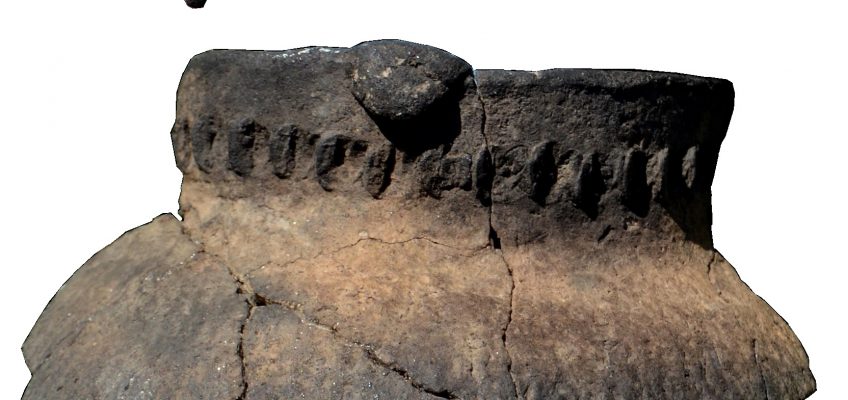Doors open at 12 noon with refreshments. Meeting begins at 1:00 pm.
Topic:
“Connellee Peak (41MY5): A Geographically Aberrant Middle Ceramic Period Mesa Top Community in Motley County, Texas”

Speaker:
Dr. Christopher Lintz, Research Associate, Texas State University
Abstract:

The Connellee Peak site is a small mesa top occupation located in the Middle Pease River drainage in Motley County that has been historically known at least since 1886. The occurrence of flakes, bone, chipped and ground stone tools, prehistoric pottery and ashy deposits on top of the mesa as well as more than a dozen deep mortar holes in talus slope boulders attest to prolonged and intensive prehistoric occupations at the site.
Abundant historic graffiti occurs on the sides of the mesa, and even a few turn of the century photographs document that the mesa has been a favorite recreation area since the 19th century. The mesa top sediments were extensively vandalized by a family of relic hunters and their friends between 1947 and 1993, when the patriarch died. The local bank in Matador displays three frames containing more than 500 projectile points attributed to this site which document dominant prehistoric occupations spanning the Late Archaic through perhaps Late Ceramic Periods (ca. 3,000 to 300 years ago).
A collection of more than 1,800 plain and cord marked potsherds from Connellee Peak were given to a friend of the family during the period of excavations. Over the years, considerable efforts at matching and restoring vessel portions have reduced the pottery assemblage to 1,531 sherds all from the Late Prehistoric/Middle Ceramic Period (AD 1200 – 1550). No sherds attributed to the Early or Late Ceramic Periods, nor clear trade wares from East Texas or the Southwest are evident in the ceramic assemblage.

The closest recorded site with cord marked pottery occurs some 75 km to the north in the Red River Drainage. The Connellee Peak cord marked pottery has a remarkably high incidence of punctated, incised, and modelled decorations relative to the Antelope Peak Phase peoples in the Canadian River drainage of the central Texas panhandle. Although decorated pottery is rare in most Classic Antelope Creek assemblages, sites in Southern Kansas, the Oklahoma panhandle and the eastern edge of the Texas panhandle display a wide range of decorations that have been inadequate investigated or rigorously documented.
This talk focuses on a description of the mesa, associated features and petroglyphs, and the decorated cord marked ceramic assemblage from Connellee Peak. Comparison of the ceramic decorative motifs draws comparisons with ceramic motifs found elsewhere in a preliminary attempt to determine if the Connellee Peak occupation represent a displaced group, or a newly recognized group of people with a distinctively different range of motifs in their cord marked ceramic assemblage.
Bio:
Dr. Chris Lintz, PhD Archeologist from Austin, Texas, currently Research Associate with Texas State University, Anthropology Department. Chris is newly retired from the Wildlife Division of the Texas Parks and Wildlife Department. While there, he conducted and oversaw the cultural resource studies on 1,200 square miles in 51 Wildlife Management Areas across Texas and also conducted archeological studies for federally-funded wildlife habitat enhancement grants on private lands. He has conducted archeological projects in many, many states and Puerto Rico in his more than 50-year career. He graduated with a B.A. from Arizona State University, and earned MA and PhD degrees from the University of Oklahoma.
Place: Riverside Nature Center – 150 Francisco Lemos, Kerrville, Texas 78028
***P.A. System NOW at Meetings!***

